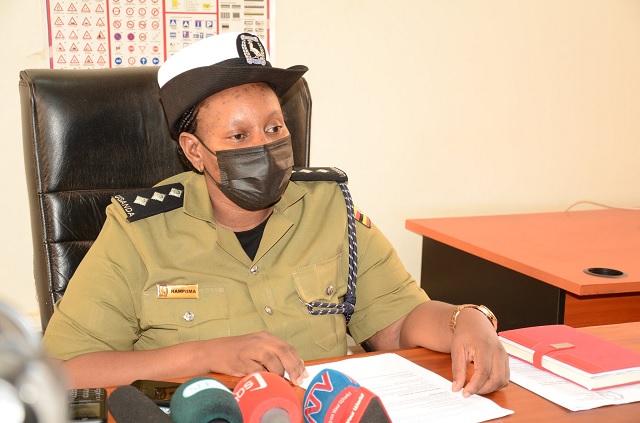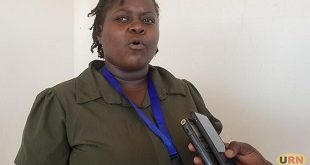
Kampala, Uganda | THE INDEPENDENT | The traffic records for the last five weeks show 435 people were killed in various road crashes across the country. The figures also indicate that 1,300 people were left nursing serious injuries.
Assistant Superintendent of Police-ASP Faridah Nampiima, who is the traffic police spokesperson, said the four weeks of June left 366 people killed in road crashes while 1,146 road users survived with critical injuries.
Nampiima adds that another 69 people perished in road crashes in the first nine days of July. The 366 people killed in June and 69 killed in the first week of July bring the total number of road deaths to 435.
The deaths also mean 87 lost their life each week that passed. When computed to days, the road killing translates into 12 people dying each day as a result of vehicle, motorcycle or bicycle crashes. If the road deaths continue being high, Uganda is likely by December 31st to have the highest number of road killings it has seen ever.
Statistics recently released by Acting Traffic Police Director Lawrence Nuwabiine, show 4,159 people died in road crashes in 2021. This means 11 people lost their lives in road crashes every day. However, since April this year to date, daily road crash deaths have been ranging from 12 to 14 persons.
Like last year where most of the deaths were of boda boda riders standing at 1,390, followed by pedestrians at 1,384, the situation hasn’t changed much. Pedestrians and motorcyclists are still the biggest number of victims.
Some of the major road fatalities registered in the first week of July was at Kinawata railway crossing where three people coming from a hangout were crashed by a train. Two of the trio have been identified as Caroline Aturinda and Nobert Tezikara.
Another crash that killed 10 people happened on Bombo road. Police have arrested the driver who was aged 22 years. It is believed that the victims were netballers from Bwaise but no one has come out to claim ownership of the taxi. Nampiima said the cause of the Bombo crash was a tyre burst while the Kinawataka crash resulted from reckless driving.
But Sam Bambanza, a road safety activist and director Hope for Victims of Traffic Accidents (HOVITA) says efforts to should be on investigating every crash to establish the causes. Bambanza adds that there is also need to have a robust emergency response system.
*****
URN
 The Independent Uganda: You get the Truth we Pay the Price
The Independent Uganda: You get the Truth we Pay the Price




So sad.
However, the 22-year-old driver is not of age to drive a vehicle with more than 7 passengers.
I have seen a statement: “the train can come from any direction at any time”
First of all why should movement of institutional “vehicles” be sporadic?
What effort has made us aware these claims
The “Uganda railway, of Uganda” of the 1970s ensured closure of roads and human beings waving red flags etc by the time we passed by. This was three trips per year for six years, the trip cost 2.60 shillings
Right now there are structures by the rail obstructing clear view, and a single unit moving at a terrific speed, so what was that driver chasing?
Now this Rapid response team, in the event that the driver of the train unit reported incident, how come the official transport did not get to victims in a timely manner? Which health facilities handle road traffic accident victims first and who man’s them?
If a head, spinal, chest and abdominal related injury patient continues to be assisted by the good samaritans who happen to pass by the accident site, then numbers of the dead have to continue increasing
Please ensure free service since identifiers of the victim are among the first items to disappear from the accident site
How many people were in the vehicle?
As I looked at the remains of a victim, I realised that an audit should be carried out; human life has a value to it
Please use the quality improvement strategy
As a tax payer for 36yrs, I request for evidence that we mere mortals have been exposed to awareness of such claims that a train can come from any direction at any time.
The intersection points of railway lines with public roads are known, as such we believe that there are standards to ensure safety for the users of such roads
We are routinely stopped to clear the way for VIPS who have right of way, is it too much to ask for the trains to notify of arrival at these intersection points? This then should alerts implementing measures to ensure that no road user crosses the railway
Now that what used to happen in this country, has not been happening, do we have room to demand for redress?
Subsequent messages should reflect respect for concerns of the general population
When the check list of safety measures related to Railway transport is attended to, we hope that another check list will come in as to what happens after an accident in Uganda:
The civilians need to know how to contact the rescue team ( but if they call and get no response what next?)
Some are ready to transport the victims, but I witnessed a scene where individuals declined because ” police asks too many questions”
Since documents and phones are picked from the victims, who meets the bill at the nearest health facility? Stories are told of “we took patient to facility X but were turned away”
But it is also possible the facilities act in good faith, knowing that they lack what is required at the hour of need
The good summaritans are not likely to know how to handle the victims what is the basic minimum information that should be availed to the population
In an emergency , “speed” is a vital need
But when the rescue team arrives and starts gathering information on the incident, this component is defeated.
Recognition of those who rescue and sometimes avail required material at the initial point of contact with treatment centers
(generated from stories we listen to during bereavement)